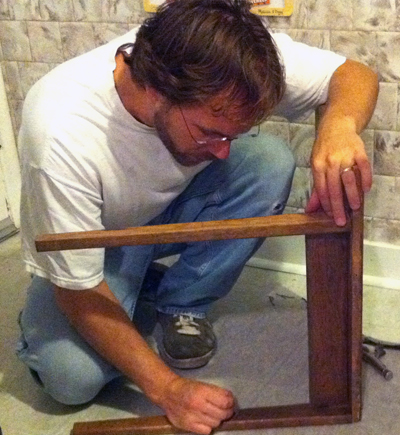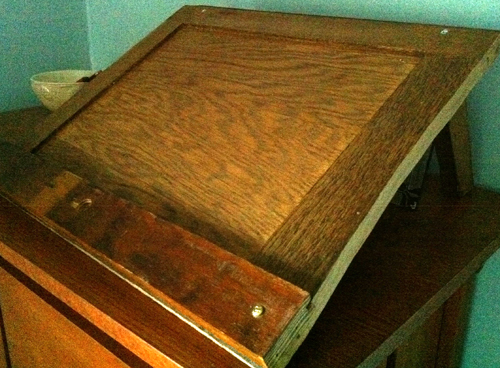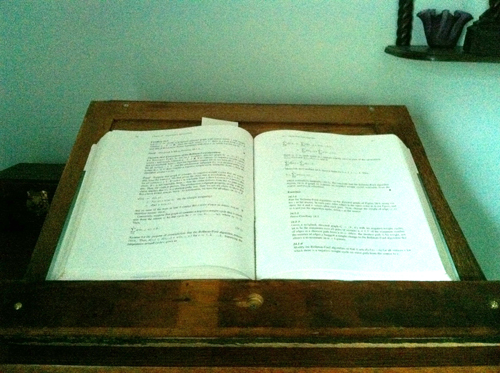Much of our house is devoted to the the storage of books. We have three bookshelves in the front room, one in the parents bedroom, 2 in the kids bedroom and three more in the office. Book shelves may be ideal for holding books. It’s not unlike a computer with lots of hard drive space, tons of giggly bytes.
But what of accessing that information. You’ll need migs and megs of memory. If nothing else, pulling out one’s books demands that I have a place to rest it, even better if the platform for accessing that information displays the data in a user-friendly way. Enter the angled writing desk.
Supposedly, monks during the medieval periods used desks that were angled . They were serious writers and readers. They spent hours copying texts, maintaining the slim thread of knowledge from the past for future generations (of monks, one supposes, though they had to convert because they couldn’t breed). If it was good enough for them, why not us.
We’d already busted up the chiffarobe, with no help from Tom Robinson, having created a chalkboard and a cabinet, a mirror and who knows what else. So, now, what to do with the rest of the various bits?
I’d actually had a writing desk from Levenger (bought when I was less averse to accessing lines of revolving credit) but left it at an employer upon ditching the place and never had the heart to drive the 90 miles to go get it. I had always wanted to replace it, but remember it not being particularly cheap, so the desire went unmet. In playing around with what to do with the chiffarobe leftovers, I was trying to figure out what do. I realized that the piece I was playing with could very nicely work as a reading or writing desk.
The piece that would be the platform of the writing desk was big enough for a really big Bible or text book. To it, I screwed a piece to serve as a lip at the bottom. Lastly, the piece that had held the mirror of the chiffarobe had two long tapering pieces and a thicker piece connecting them. This seemed ideal for legs, as it was also wide enough. So I connected them with screws to desktop. Lastly, I had to cut the legs down to get the proper angle. The floor tiles in Jeff’s house made a nice grid, so I laid the desk on its side and tested out various possible angles. When I got to one that Jeff and I thought ideal for reading and writing, I looked at the line of the tile that “cut through” the leg, marked it, and cut the desk legs.
It’s rough-hewn but was incredibly free, as in beer. Now, I’m off to write something seriously awesome on this new desk. Or maybe just read a book.


